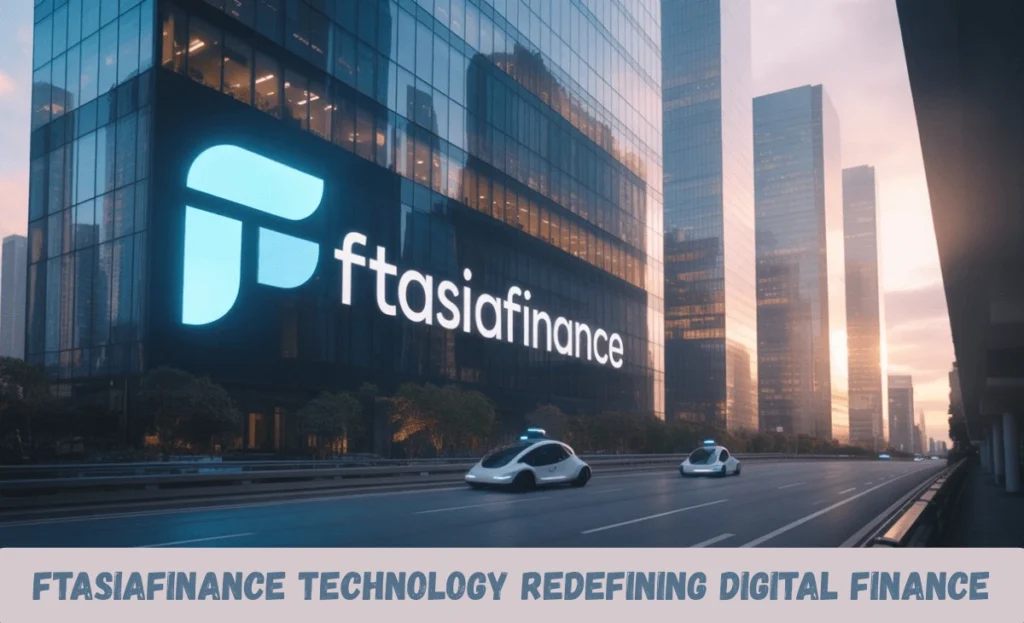For anyone navigating today’s volatile financial ecosystem, innovation is no longer a luxury — it’s a necessity. The emergence of Ftasiafinance technology has caught the attention of fintech professionals, digital entrepreneurs, and investors alike. But what makes this innovation stand out? Unlike traditional financial systems that struggle to keep up with the pace of digital demands, this new wave of finance tech promises to bridge that gap with speed, intelligence, and adaptability.
As someone who has worked in both legacy banking systems and fintech startups, I’ve witnessed firsthand how outdated infrastructures can stall progress. That’s why technologies like this aren’t just trends — they are solutions designed for long-term change.
What Is Ftasiafinance Technology?
At its core, Ftasiafinance technology is a modern framework for financial services built on decentralized digital infrastructure. It merges advanced AI-driven analytics, embedded finance tools, and real-time data processing to optimize how institutions manage money, assess risk, and serve customers.
Unlike rigid legacy systems, this technology supports scalable architecture, allowing rapid integration with APIs, cloud-native apps, and mobile-first platforms. It offers a seamless experience across savings, lending, wealth management, and decentralized finance (DeFi) protocols.
But it’s not just about faster transactions or automation — it’s about building systems that learn, predict, and evolve based on user behavior and market shifts.
Why Ftasiafinance Technology Matters Now
Digital expectations are skyrocketing. Consumers want financial services that are instant, personalized, and transparent. Businesses need agile platforms that can pivot fast during economic uncertainty.
That’s where this technology becomes critical. It helps both ends of the spectrum — enabling startups to launch faster and allowing traditional institutions to modernize without overhauling everything.
The urgency stems from rising global fintech adoption. According to Statista, the global digital payments market is projected to reach $14.78 trillion by 2027. With this growth comes demand for infrastructures that can handle scale, compliance, and innovation — precisely what Ftasiafinance technology offers.
Real-World Benefits and Use Cases
When applied properly, this technology unlocks real, measurable advantages.
For fintech startups, it reduces time to market. For instance, integrating a payment gateway or a lending feature could take weeks instead of months. In my own work advising early-stage financial ventures, platforms enabled by this technology consistently shaved 40–60% off launch timelines.
For banks, the benefit is risk reduction. Real-time fraud detection, KYC automation, and AI-based credit scoring are no longer aspirational — they’re operational through this system. A mid-sized European digital bank I collaborated with managed to reduce fraud incidents by 36% within a year of implementing a Ftasia-based backend.
And for users? It means faster transactions, lower fees, and better personalization. Imagine opening an account, accessing a loan offer, and getting portfolio insights — all within a single mobile dashboard, powered seamlessly by this framework.
Challenges and Misconceptions
As promising as it is, the technology isn’t without challenges.
One major barrier is regulatory complexity. Financial services are deeply governed by local laws, and adapting a digital-first solution across jurisdictions takes serious compliance planning.
Another myth is that this tech is only for startups. While it’s true that many new players adopt it early, several legacy banks are quietly reengineering their stack using modular finance tech, including features like embedded lending, dynamic interest engines, and token-based reward systems.
Cost is often cited as a deterrent. But the reality is that the long-term return — through customer retention, faster iteration, and operational savings — far outweighs the initial investment.
Core Components Driving the Technology
Several technologies work in synergy under the umbrella of Ftasiafinance solutions.
- Smart Data Processing:
Machine learning models analyze vast datasets to detect patterns, predict trends, and offer insights — improving everything from credit scoring to fraud prevention. - Cloud-Native Architecture:
No more outdated on-premises systems. With elastic cloud deployment, services scale instantly to handle more users or transactions. - API-Driven Flexibility:
Developers can plug and play with financial features — adding savings, lending, or crypto payments without deep backend changes. - Real-Time Transaction Engines:
Latency is near zero. Whether you’re trading assets, moving money internationally, or managing payroll, the speed and accuracy redefine performance expectations.
How to Implement Ftasiafinance Technology in a Business
If you’re a startup or SME looking to integrate such innovation, the process isn’t as complex as it seems.
Begin with an assessment of your core needs: Are you looking to automate payroll? Offer microloans? Launch a crypto savings product? The right implementation starts with clarity.
Next, explore platform vendors offering modular support. These include providers that focus on embedded finance, low-code/no-code tools, and AI-enhanced analytics.
From my own advisory work, I’ve found success in pilot-based rollouts. Start with one feature, like a digital wallet or instant credit, observe usage metrics, gather customer feedback, and iterate.
Training your team is also vital. The best platforms offer sandbox environments and customer success onboarding, ensuring your team understands both the tech and compliance dimensions.
The Future Outlook
The evolution of financial technology is heading toward hyper-personalization, zero-latency services, and globally compliant infrastructure.
Ftasiafinance technology aligns perfectly with that vision. As AI gets more contextual, blockchain becomes more scalable, and user expectations soar, having a foundational system that can adapt will define who wins and who lags.
We’re already seeing signals. From tokenized assets in Singapore to open banking in the UK, financial ecosystems are undergoing tectonic shifts. The ones embracing platforms like this are not just keeping up — they’re shaping the direction.
Recommended Visuals
- System Architecture Flow: Diagram showing how cloud-native, API-driven finance systems connect with mobile apps and banking layers.
- Before and After Metrics: Chart comparing customer onboarding times or fraud detection rates before and after tech adoption.
- Case Study Snapshot: Visual breakdown of a bank or fintech startup’s journey using this tech.
Frequently Asked Questions
What is Ftasiafinance technology used for?
It powers digital financial services such as lending, payments, and fraud detection through smart, scalable tech systems.
Is this technology suitable for small businesses?
Yes. It allows startups and SMEs to integrate complex financial services using modular tools without heavy development.
How secure is this platform?
It uses AI-based monitoring, encryption, and real-time alerts to ensure high-level data protection and regulatory compliance.
Can it replace traditional banking systems?
Rather than replacing them entirely, it modernizes existing systems by layering smart features over legacy infrastructure.
What are the biggest advantages for end users?
Users benefit from faster services, lower costs, personalized insights, and intuitive interfaces driven by intelligent backend systems.
Does it support cryptocurrency or DeFi?
Yes, many versions of the tech offer built-in support for blockchain integrations and decentralized finance operations.
Conclusion
Ftasiafinance technology isn’t just another fintech buzzword — it’s a foundational leap forward. Whether you’re a startup founder, bank executive, or product designer, the opportunities here are transformative.
This isn’t about catching up. It’s about setting the pace.
Ready to explore what’s possible? Dive deeper into building or evolving your financial platform with intelligent, scalable infrastructure that delivers lasting value.






